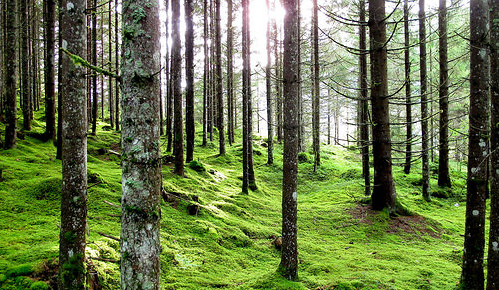
Trees and forests can make the difference. They can affect temperature regionally in many areas of the world: it’s a matter of soil, color of land (darker or lighter), water availability, snow cover. The results of a study focused on how land cover changes impact on regional temperatures and precipitation, realized by CMCC researchers working in an international team.
The different ways in which we use soil, land cover changes and land conversions – e.g. from forests to grassland, shrub land or agricultural land – it’s a key aspect to take into consideration in order to implement the best solutions to address climate change impacts.
An international team of researchers – among them, Lucia Perugini, Luca Caporaso and Sergio Marconi of the CMCC Foundation – Euro-Mediterranean Center on Climate Change analyzed how land cover changes affect temperature regionally in different areas of the planet, with a special focus on the nexus between land use change impacts and decision makers’ options in support of the identification of best mitigation and adaptation strategies at local level.
The output is an article published on Environmental Research Letters. In the study the authors reviewed the existing scientific literature on this topics while highlighting that deforestation induces a warming effects in the tropics and a cooling in the boreal zones, such as Siberia and Northern European regions, with contrasting results in temperate regions. The amount of snow cover and the availability of water in the ecosystems make the difference. Moreover, the study underlines that deforestation leads to a mean reduction in precipitation in all regions, especially where land cover changes cause a land conversion from forest to bare land.
In the tropics, forested areas contribute to keep under control and limit the increase of regional temperatures. “In these areas – Lucia Perugini (CMCC), lead author of the study, explains – it’s particularly relevant the effect of heat absorbed in the process of water changing phase from liquid to gas (evapotranspiration)”. On the contrary, deforestation triggers an increase of temperature to be added to the warming induced by CO2 and other greenhouse gases. Therefore in this region afforestation activities may produce the dual benefit of carbon dioxide removal from the atmosphere and a decrease of temperature.
“In boreal regions – Perugini says – albedo effects due to snow cover contributes to a regional cooling”. Forests are darker than grasses or bare lands especially during winter, when tree crowns shade the underlying snow layer and reduce the albedo considerably. Open landscape is generally lighter in northern regions with snow cover, and solar energy is reflected back into the atmosphere in a more efficient way.
Contrary to the tropics, afforestation in boreal regions may cause a warmer climate. Under a global warming scenario, it’s important to keep in mind that this effect will be reduced when snow cover will become less abundant.
The study, entitled “Biophysical effects on temperature and precipitation due to land cover change”, it’s an important contribution to available knowledge on a topics particularly complex and of strategic importance in the framework of the Paris Agreement. In the Paris Agreement, an entire article (art. 5) is dedicated to forests and their relative contribution to address climate change impacts. “A key aspect of this review – Perugini concludes – it’s the fact that highlights how deforestation has a deep influence at the local level while showing effects and results that may be different from the ones obtained at the global scale. This kind of assessments may be useful for local decision makers and administrators working on the development of regional mitigation and adaptation strategies to climate change”.
Biophysical effects on temperature and precipitation due to land cover change
Lucia Perugini, Luca Caporaso, Sergio Marconi, Alessandro Cescatti, Benjamin Quesada, Nathalie de Noblet-Ducoudré, Johanna I House and Almut Arneth
Published 19 May 2017
Environmental Research Letters, Volume 12, Number 5
For more information and requests for interviews:
Mauro Buonocore – CMCC – Press Officer
[email protected]
tel. +39 0832 671060
http://tec.cmcc.it


